Superfamily Pentatomoidea Rank Species | Suborder Heteroptera | |
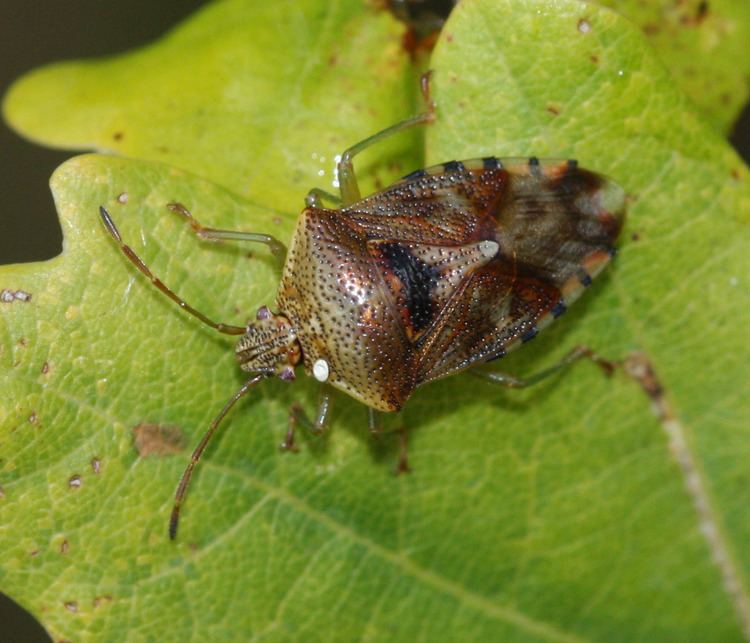 | ||
Similar Elasmucha, Insect, Acanthosomatidae, True bugs, Elasmostethus interstinctus | ||
Chemical attack ants vs parent bug natural world the secret garden bbc
Growing up parent bug
Description
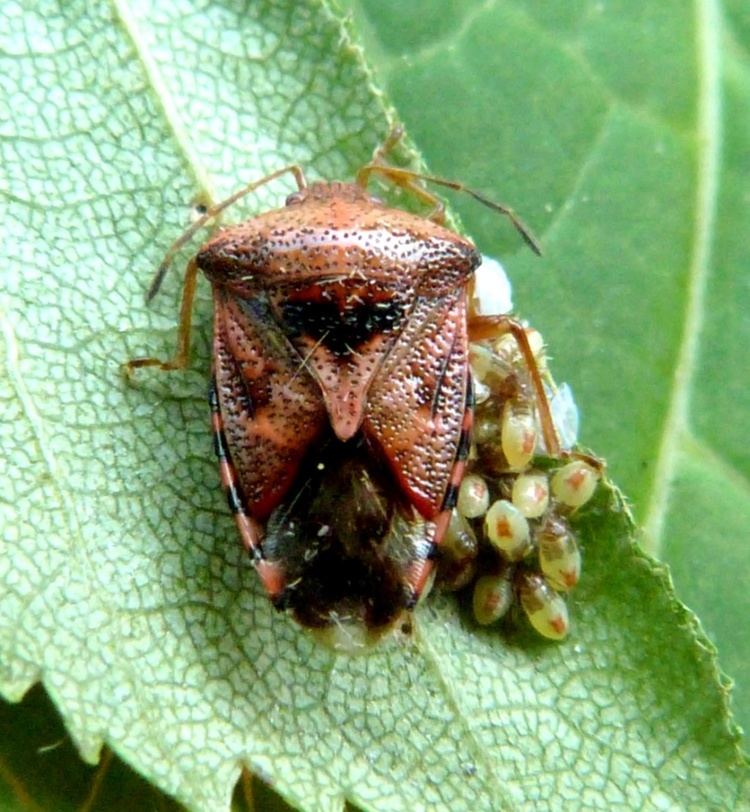
Parent bugs belong to the family Acanthosomatidae (Hemiptera) - so-called shield bugs or stink bugs. and include the genus Elasmucha. Parent bugs possess methatoracic and abdominal glands, which discharge a foul smelling secretion. This secretion is used to deter potential enemies and is sometimes released when the bug is disturbed.
Contents
- Chemical attack ants vs parent bug natural world the secret garden bbc
- Growing up parent bug
- Description
- Life cycle
- Parental care
- References
Life cycle
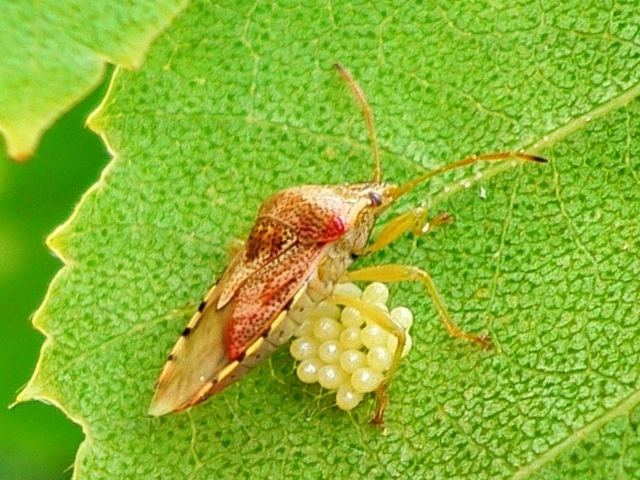
Like most shield bugs, parent bugs suck plant sap and require symbiotic bacteria for their digestion. They obtain symbionts at an early age: the mother covers her eggs with bacteria so that the larvae ingest them as they feed on the egg case. Both adults and larvae readily feed on developing seeds, and breeding individuals can be observed on host plants with many young catkins. However, they seem to avoid trees with a high predation risk.
Parental care
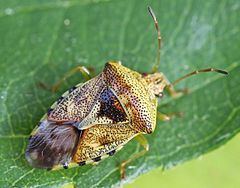
The common name comes from the relatively rare insect behaviour of prolonged caring for eggs and juveniles, exhibited by females of this species. Predators, such as bugs, beetles, earwigs and ants, can eliminate all the offspring of the parent bug if there is no maternal care. The repertoire of female defensive behaviours includes wing fanning, body jerking, tilting towards the enemy and, finally, releasing of 'nasty’ odours from the scent glands,

After oviposition, the parent bug female stands over the egg batch and shields it throughout egg development. Predation appears to limit the clutch size in E. grisea. Experiments have shown that large females lay larger egg clutches than small females. However, when the clutch size was manipulated, small females protecting large clutches lost significantly more eggs than large females guarding small clutches or females in the control groups (guarding clutches of optimal size).

After hatching, larvae of the parent bug remain in a tight aggregation, feeding on their empty egg shells. When any larva tries to abandon the aggregation, the female tilts her body, stretches her antennae to reach the larva and pushes the larva back to the aggregation. During the second and third instar they move, for food, towards catkins then back to the leaf with the female in close attendance. The female keeps a lookout for the larvae constantly and manages them with touches of her antennae. Finally, larvae form smaller groups and disperse at the end of the third instar, at which point the female leaves them.
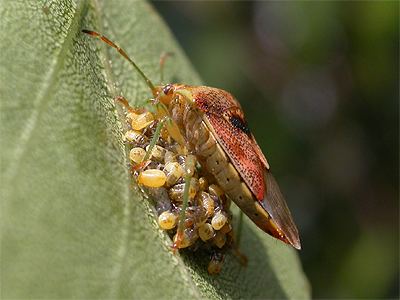
It has been noted that, in E. grisea, moultings during the early instar stages can be asynchronous. While some larvae are still at the first instar stage, others have already moulted to the stage of second instar larvae and abandon the brood leaf for food. Under such circumstances, the female is no longer able to provide effective protection for all her larvae. The offspring of different females make contact with each other and form mixed groups. There is no kin-recognition in this species. Both single and joint guarding females provide parental care for their own larvae or other females’ offspring. Larvae are likely to benefit from 'kindergartens', when their mothers disappear or die. Moreover, joint-guarding females defend the egg clutches much more successfully than single females.
The tachinid fly, Subclytia rotundivertis, is a specialist endoparasite of the parent bug females. The parasite inserts a single egg through the upper prothorax of an E. grisea female and, after hatching, the larva feeds on its host. At the beginning the parasite feeds only on the non-vital parts of the bug, but finally it kills it and pupates outside the host. Interestingly, the larva ‘permits’ the parent bug to continue caring for the juveniles until their third stage. In experiments, the wing-fanning (regarded as the most effective defensive behaviour of the parent bug) did not differ significantly between parasited and non-parasited females until the nymphs were at the second instar stage. However, with older nymphs, females were much less effective in their defensive behaviour and often died before the end of maternal care. Considering that the older nymphs are more mobile and may escape from predators, some offspring of the parasited females of the parent bug probably survive and may also be potential hosts for the new generation of the parasite.
